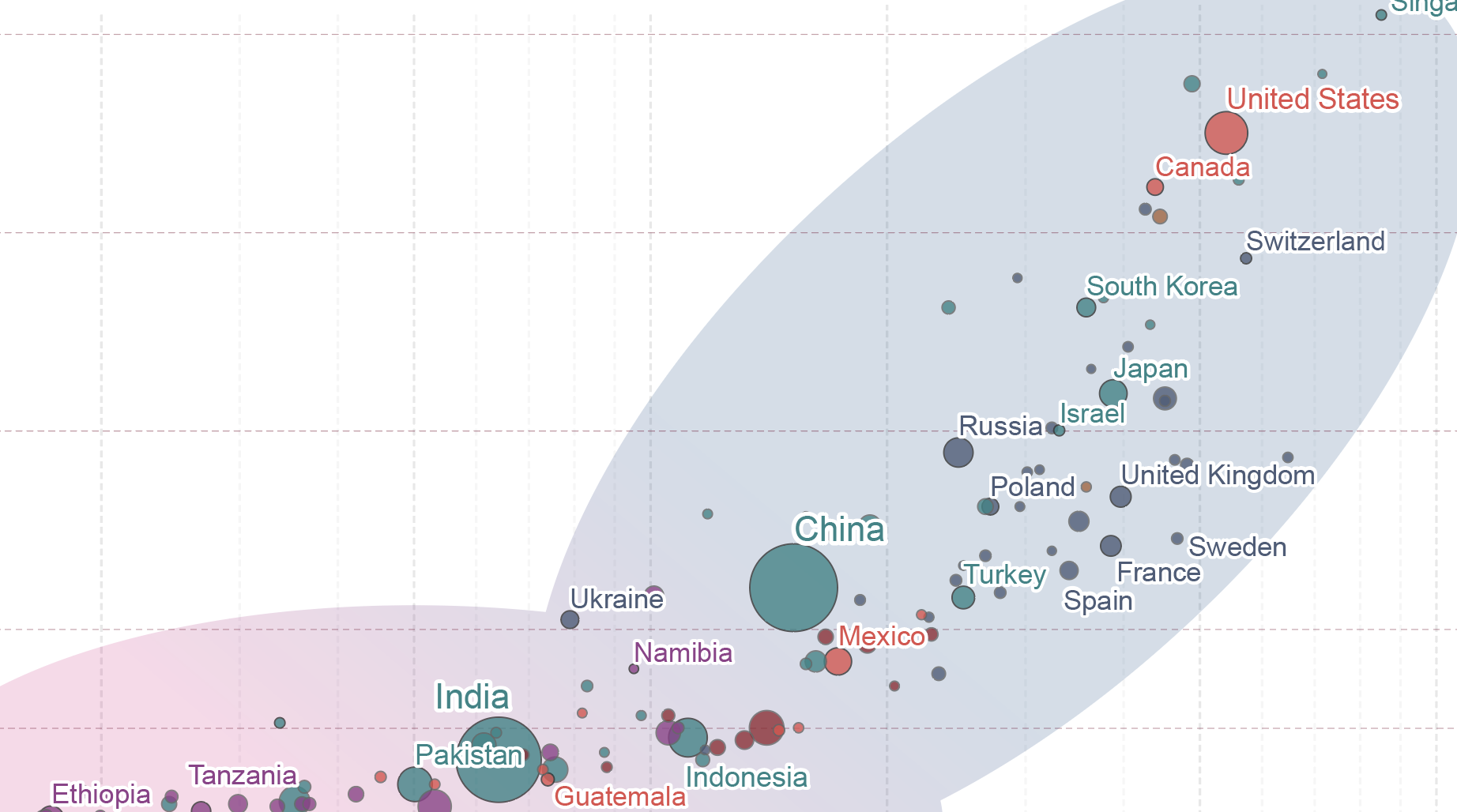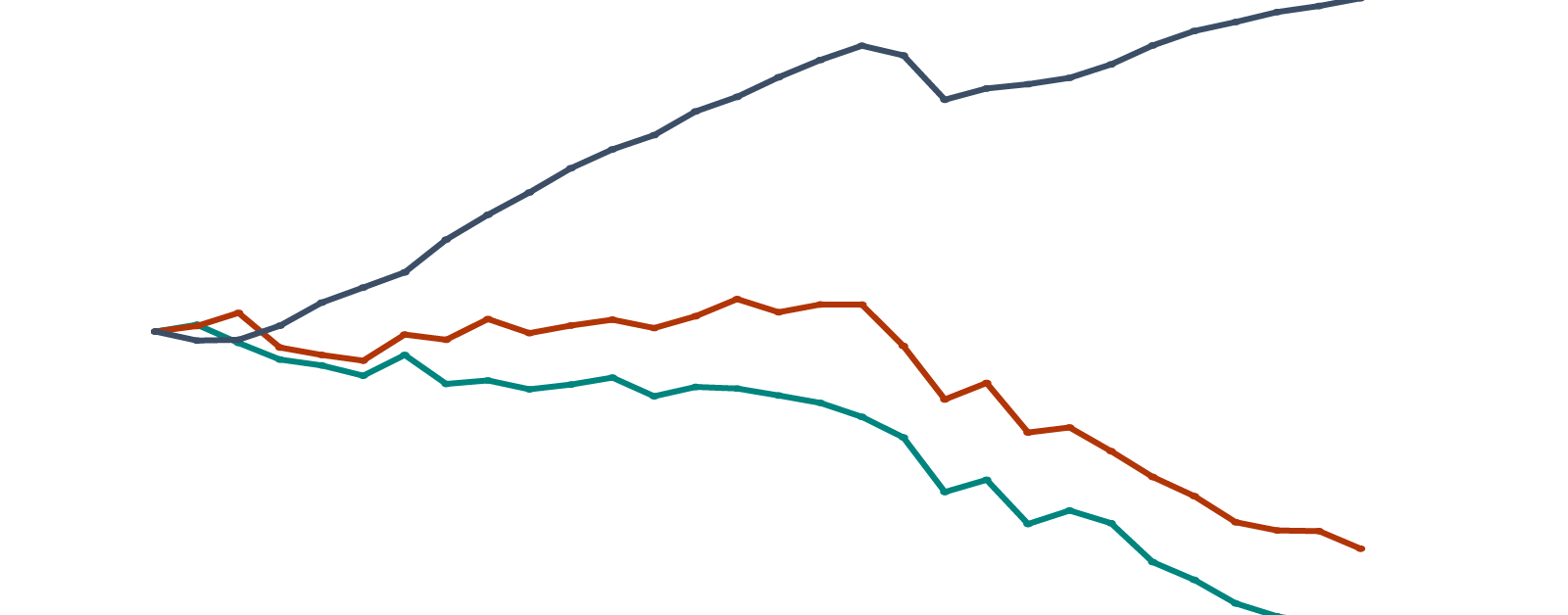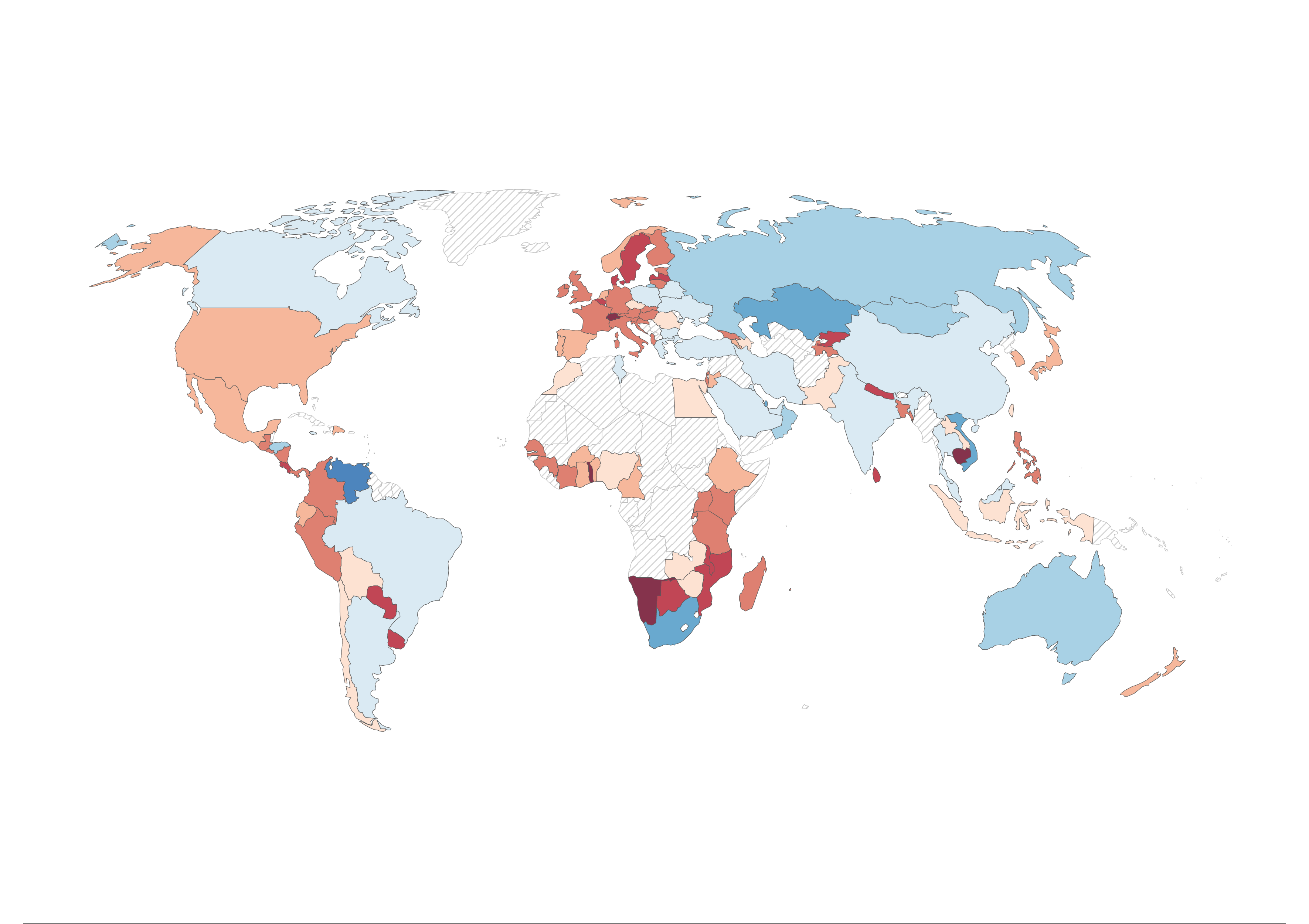Per capita consumption-based CO₂ emissions

What you should know about this indicator
- Consumption-based emissions attribute the emissions generated in the production of goods and services according to where they were consumed, rather than where they were produced.
- The data is calculated by adjusting 'production-based' emissions (emissions produced domestically) for trade: Consumption-based emissions equals production-based emissions, minus emissions embedded in exports, plus emissions embedded in imports.
- If a country's consumption-based emissions are higher than its production emissions it is a net importer of carbon dioxide. If its consumption-based emissions are lower, then it is a net exporter.
- Consumption-based emissions are not available for all countries because not all countries have sufficient, high-quality trade data. But those without complete data are a small fraction (3%) of the global total.
- This data measures carbon dioxide (CO₂) emissions from fossil fuels and industry and does not include emissions from land use change, deforestation, soils, or vegetation.
- Per capita emissions represent the emissions of an average person in a country or region - they are calculated as the total emissions divided by population.
- Emissions from international aviation and shipping are not included in any country or region's emissions. They are only included in the global total emissions.
Related research and writing
Frequently Asked Questions
Are emissions from aviation and shipping included?
Emissions from domestic aviation and shipping are included in each country’s total. Emissions from international aviation and shipping are not included in any country or region’s total. This is because there is no international agreement on how these emissions should be allocated: should they, for example, be allocated to the country of origin or destination? In our related article we look at a separate dataset on emissions from aviation.
They are, however, included in the global total. You also find it here as a separate category.
Why are consumption-based emissions only available from 1990? Why are they not available for all countries?
To calculate consumption-based emissions we need detailed trade data between countries and the emissions intensity (the amount of CO2 emitted per dollar spent) across many industries and sectors in each country. Prior to 1990, there is insufficient high-quality, high-resolution data to produce these calculations.
For this same reason – insufficient high-resolution trade data – it is not currently possible to calculate consumption-based emissions for all countries. It is mostly high-income and major economies that are included.
Consumption-based emissions also always lag production-based emissions by one year. For example, when production-based emissions for 2020 were released, the latest year for consumption-based emissions was 2019. This is because the required resolution of trade data was not yet available for 2020.
Sources and processing
This data is based on the following sources
How we process data at Our World in Data
All data and visualizations on Our World in Data rely on data sourced from one or several original data providers. Preparing this original data involves several processing steps. Depending on the data, this can include standardizing country names and world region definitions, converting units, calculating derived indicators such as per capita measures, as well as adding or adapting metadata such as the name or the description given to an indicator.
At the link below you can find a detailed description of the structure of our data pipeline, including links to all the code used to prepare data across Our World in Data.
Notes on our processing step for this indicator
- Data on global emissions has been converted from tonnes of carbon to tonnes of carbon dioxide (CO₂) using a conversion factor of 3.664.
- Emissions from the Kuwaiti oil fires in 1991 have been included as part of Kuwait's emissions for that year.
- Country's share of the global population is calculated using our population dataset, based on different sources.
- Each country's share of global CO₂ emissions from flaring has been calculated using global CO₂ emissions from flaring provided in the Global Carbon Budget dataset.
Reuse this work
- All data produced by third-party providers and made available by Our World in Data are subject to the license terms from the original providers. Our work would not be possible without the data providers we rely on, so we ask you to always cite them appropriately (see below). This is crucial to allow data providers to continue doing their work, enhancing, maintaining and updating valuable data.
- All data, visualizations, and code produced by Our World in Data are completely open access under the Creative Commons BY license. You have the permission to use, distribute, and reproduce these in any medium, provided the source and authors are credited.
Citations
How to cite this page
To cite this page overall, including any descriptions, FAQs or explanations of the data authored by Our World in Data, please use the following citation:
“Data Page: Per capita consumption-based CO₂ emissions”, part of the following publication: Hannah Ritchie, Pablo Rosado and Max Roser (2023) - “CO₂ and Greenhouse Gas Emissions”. Data adapted from Global Carbon Project, Various sources. Retrieved from https://ourworldindata.org/grapher/consumption-co2-per-capita [online resource]How to cite this data
In-line citationIf you have limited space (e.g. in data visualizations), you can use this abbreviated in-line citation:
Global Carbon Budget (2023); Population based on various sources (2023) – with major processing by Our World in DataFull citation
Global Carbon Budget (2023); Population based on various sources (2023) – with major processing by Our World in Data. “Per capita consumption-based CO₂ emissions – Global Carbon Project” [dataset]. Global Carbon Project, “Global Carbon Budget”; Various sources, “Population” [original data]. Retrieved June 15, 2024 from https://ourworldindata.org/grapher/consumption-co2-per-capita










